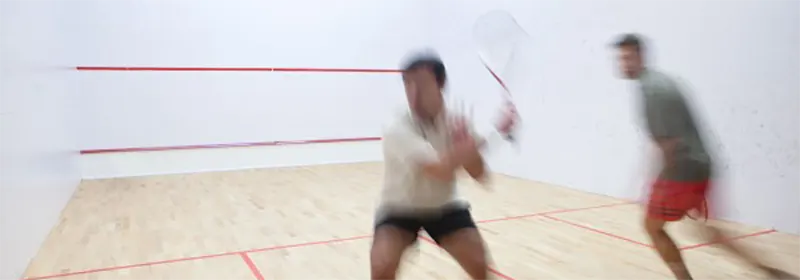07 August 2022 / 3-Min Read / Translate
My definition of pro-active learning in this context is a process in which the player actively participates in the process of improving. It’s not an academic definition, but I feel it works for squash players.
If I asked a professional squash player what their strengths and weaknesses were, they would know, but they might not tell me. That’s “classified information!” they might say. Why tell your enemies (opponents, but enemies sounds better) what your weaknesses are? Why give them free information to make their life easier.
However, if I asked club players the same question, do you think they would know? Do you? Perhaps you do, perhaps you don’t. But you should. This is the first in an occasional series about being more pro-active in your Squash Improvement Plan, referred to from now on as SIP.
It’s not easy identifying your strengths and weakness, but hopefully with some simple questions and thought processes you can determine what they are and then start to spend more time on improving them.
We will start by creating 3 factors in your squash: Physical, Technical and Mental. I am not going to go into great detail in this article, but will delve deeper in future ones. I believe that everything related to performance can be categorised into those three factors. As an amateur, you don’t need to drill down into the minutiae, in fact for this article, those three are all we need to start with.
tBefore we begin, sit down somewhere quiet and calming, and read through the article and write your thoughts down in a notebook. Put the date you do it on the top of the page and every 6 months go through the process again. I’ll be adding my personal answers to give you some real examples, they will be in the orange background.

What do you think he is going to hit? I say a boast.
Physical: This includes overall fitness, strength in all parts of your body, but especially legs and core, agility (that’s the ability to use your flexibility in real world situations) cardio performance, nutrition, sleep, injury prevention and recovery.
Technical: This covers your swing technique and footwork. That’s only two things, but each stroke has a different technique and each side has differences too. Footwork might seem about fitness, but in the same way that dancing is about technique, so is sports footwork.
Mental: In this factor I include your ability to concentrate, your tactical awareness and gameplan, your ability to manage nerves and doubts, positive self-talk and a whole host of other sports psychology/performance topics. For most amateurs though, it’s about concentration, nervous and tactical awareness, which includes creating and sticking to a gameplan.
From the three factors, which is your strongest and which is your weakest? Here are some questions to help you answer that. Do you lose because you are not fit enough or because you make the wrong choices? Do you make the right choices, but can’t execute the shot correctly. For example, you chose the right time to play a drop shot, but your drop shots suck.
This question is easy for me. The Physical factor is by far my weakest area. After my two hip replacements, I can’t even move properly. My leg strength is pretty good, but I can’t use it in real matches. My strongest factor is technique. My technique is good, although not perfect and not consistent enough, but considering I only hit the ball to make videos nowadays, I’m not too unhappy. I definitely good improve the mental aspect of my squash, but since I will never play competitive squash again, it’s less important to me.
One way to decided is to give yourself a score out of ten for each one. Perhaps two might be the same, perhaps they are all the same, although that would be unusual. Knowing your main-factor weakness means you can immediately begin to address that area. I know it’s not easy to become your own coach, but try to remember some recent matches and see if anything comes to mind.
Feel free to ask a few people about the 3 factors. Having opinions from others can help, but the more specific your questions, the more precise the answers should be. Would be fascinating to ask them to score each of your factors out of ten and compare them to your assessment and others’ assessments. In fact, do it for other players you play against.
This article is an introduction to the system of pro-active self-learning. For now, we just need to identify one area from the 3 factors that is your weakest. That doesn’t mean you should suddenly spend all your time on that area, but you do need to focus on it more than the others.
For example, if, like me, your weakest area was fitness and you spend an hour per week doing solo drills, just add some alternating ghosting into those drills. There will be plenty of things you can add into your routines that just give it a little more purposefulness. I just want you to finish this article with a slightly better view of your current squash.
In the future articles I will talk about what you can do to self-assess each aspect with each factor. if you have any doubts or questions, let me know in the comments.